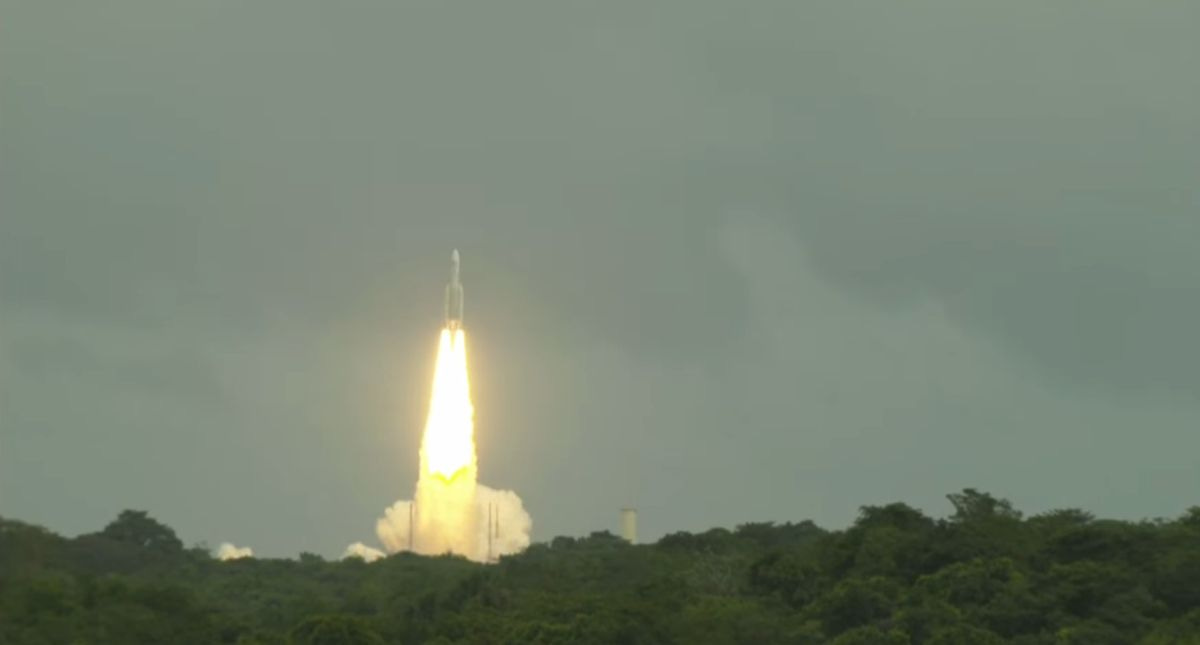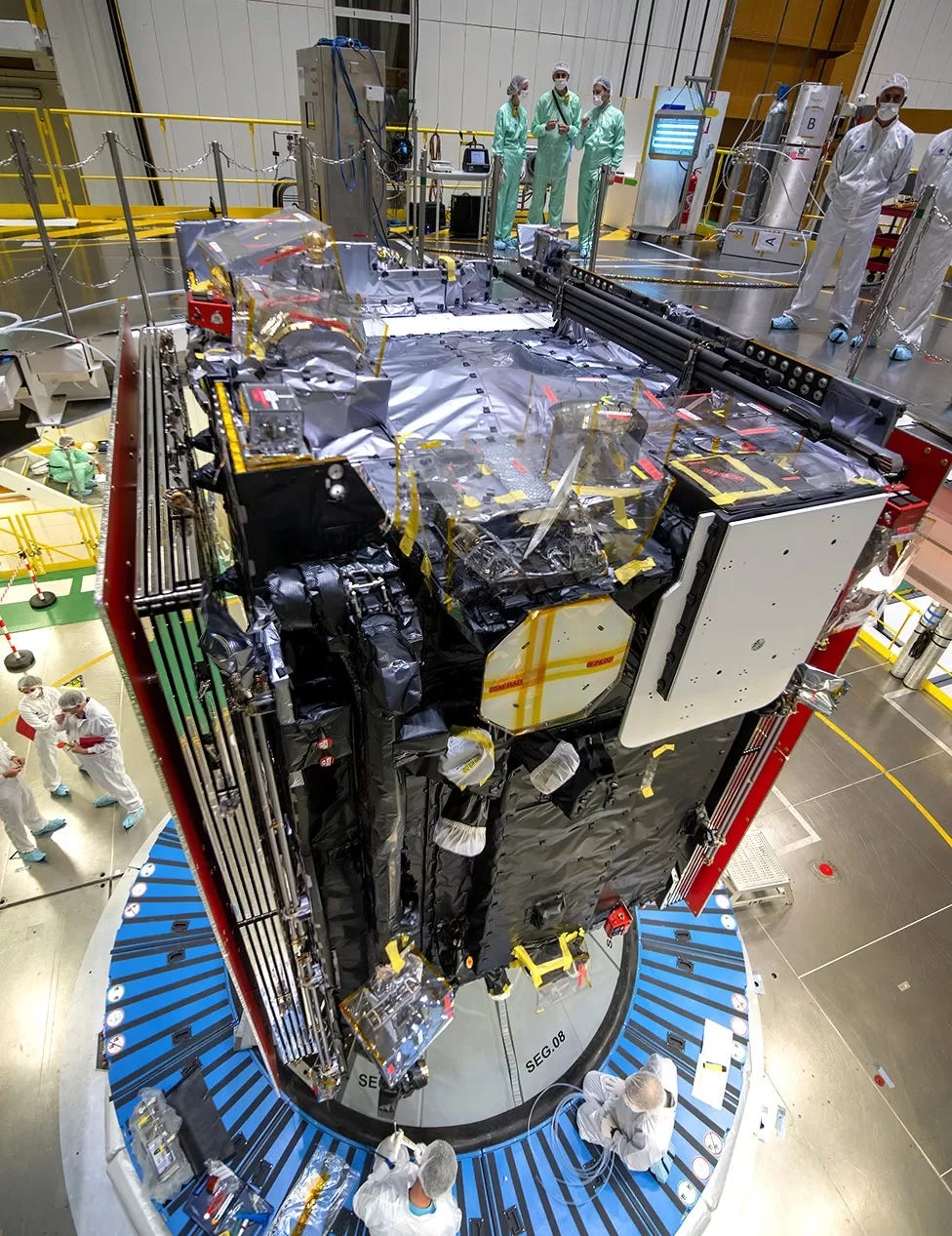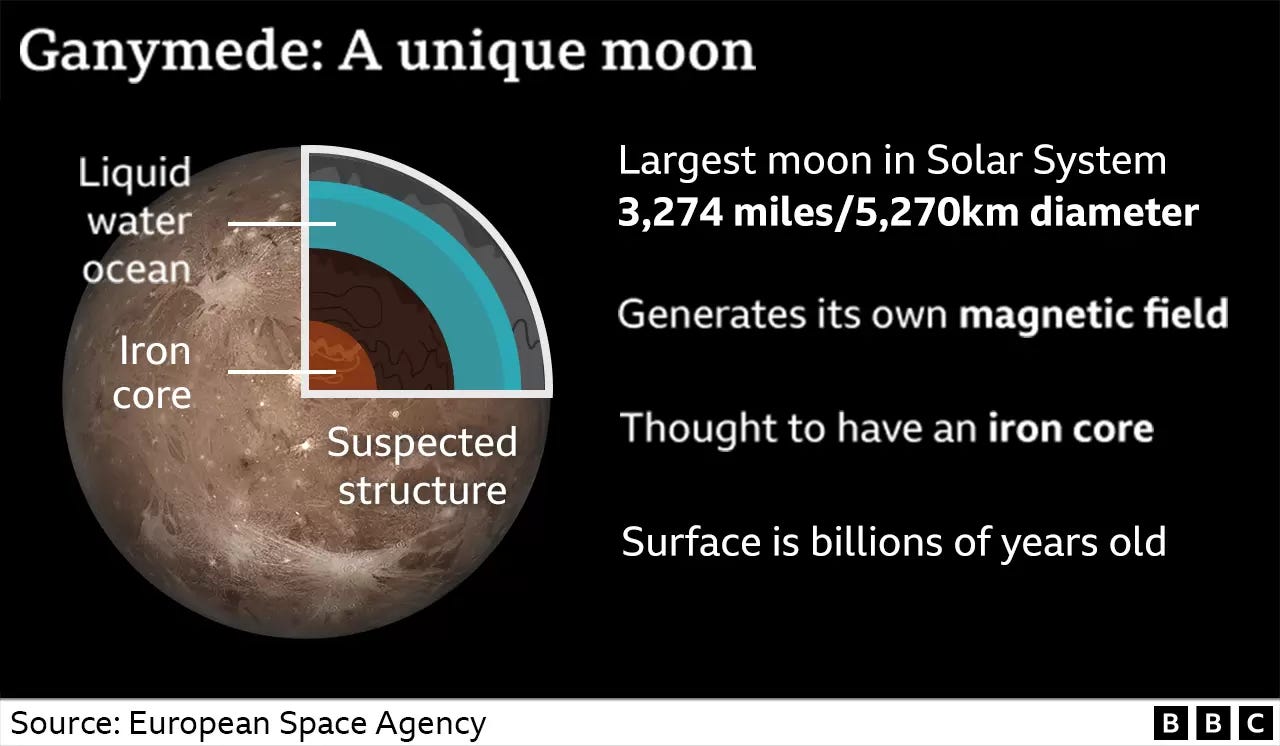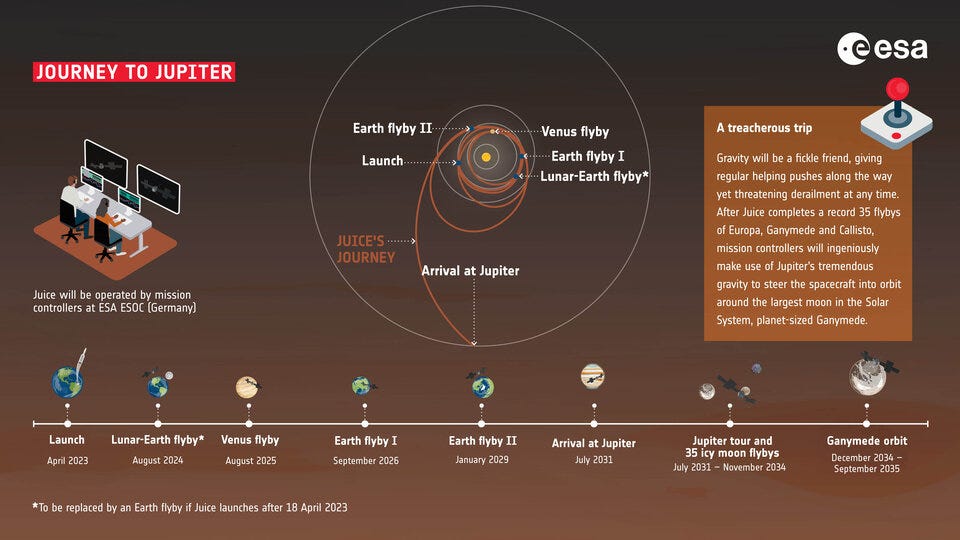ESA’s JUICE heads to King of Planets
What is the mission about? And other explorations related to it.
#We are making something exciting for space and astronomy fans, check here.
ESA’s Jupiter Icy Moons Explorer (JUICE) lifted off on an Ariane 5 rocket from Europe’s Spaceport in French Guiana at 14:14 CEST on 14 April.
WHAT is the mission statement?
The mission aims to carry out a detailed exploration of the Solar System’s largest planet and its icy moons, which potentially have habitable environments.
WHO all are involved?
The construction of JUICE was overseen by a consortium led by Airbus Defence and Space, which is a division of the larger Airbus group responsible for developing and manufacturing defense and space-related products. The spacecraft was built according to the specifications provided by the ESA.
WHY such a mission has been planned?
In short, search for life and to know better about our solar system!

JUICE will employ a range of instruments, including remote sensing, geophysical, and in situ instruments, to conduct comprehensive observations of Jupiter and its three large moons, Callisto, Europa, and Ganymede, which are believed to contain vast amounts of water that could be up to six times the volume of Earth's oceans. The presence of water has led scientists to speculate that there may be life forms present on these moons, potentially in the form of microbes or even more advanced species, similar to those found in deep-sea trenches and hydrothermal vents on Earth, such as corals, worms, mussels, shrimp, and fish, according to the European Space Agency.
For a long time, scientists have been aware that three of Jupiter's moons have icy crusts which are believed to contain oceans of liquid water underneath. This makes these moons potential candidates for supporting life. JUICE will help in exploring these water bodies by creating detailed maps of the moons' surfaces and allowing scientists to study their subsurface.
Although all three moons will be examined, the main focus will be on Ganymede, which is the largest moon in the Solar System and the only one to have its own magnetic field. After JUICE arrives at Jupiter, it will move into Ganymede's orbit and use its ten advanced instruments to measure its rotation, gravity, shape, interior structure, magnetic field, composition, and to penetrate its icy crust using radar down to a depth of about nine km.One of the primary objectives of the JUICE mission is to gain a comprehensive understanding of Jupiter and its formation, evolution, and history. By doing so, scientists hope to gain valuable insight into the formation and evolution of planetary systems and the potential for habitable environments in Jupiter-like systems around other stars.
Although JUICE is not equipped to directly detect life, it will attempt to determine whether certain conditions necessary to sustain life, such as water, biological elements, energy, and stability, exist within the icy moons of Jupiter. This is because if life does exist on these moons, it is believed to be in the water, which is difficult to access due to the ice crusts.
HOW the journey has been planned?
JUICE will take an indirect path to Jupiter, which is both energy-efficient and time-consuming. The spacecraft will be aided by four separate "gravity assist" planetary flybys to increase its speed and refine its trajectory. The first of these flybys will occur in August 2024, using both the Earth and the Moon, just 1.5 days apart, in a maneuver that has never been attempted before. It will be the most precise gravity assist maneuver ever performed.
Venus will provide the second gravity assist in August 2025, and JUICE will have additional encounters with Earth in September 2026 and January 2029. After the final Earth encounter, JUICE will head towards Jupiter directly and reach the planet in July 2031. JUICE will then fly by Ganymede, the largest moon of Jupiter, to enter Jupiter's orbit.
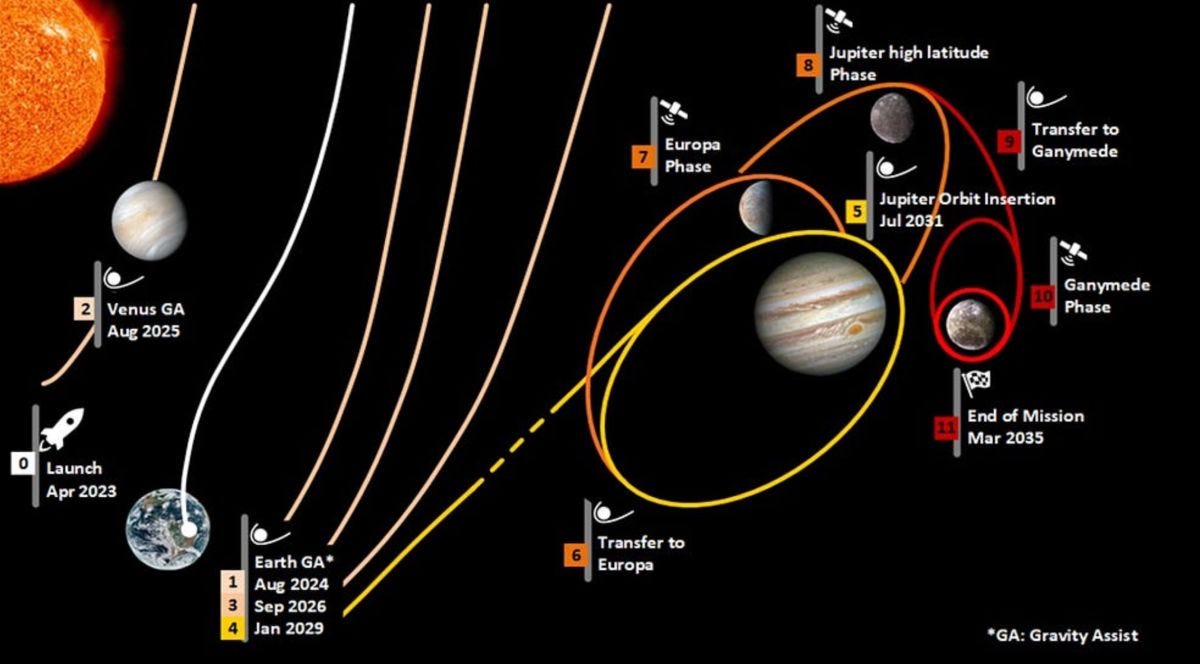
WHEN will JUICE reach Jupiter?
The JUICE team and space enthusiasts will need to exercise patience as the spacecraft is not expected to arrive in the Jovian system until 2031.
Only two other probes have previously examined Jupiter: the Galileo, which orbited the gas giant between 1995 and 2003, and Juno, which has been orbiting the planet since 2016. It's noteworthy that by the time JUICE reaches Jupiter, NASA's Europa Clipper would already be orbiting the planet. Scheduled to launch in October 2023, Europa Clipper is expected to reach Jupiter in 2030 and investigate Jupiter's Europa moon.
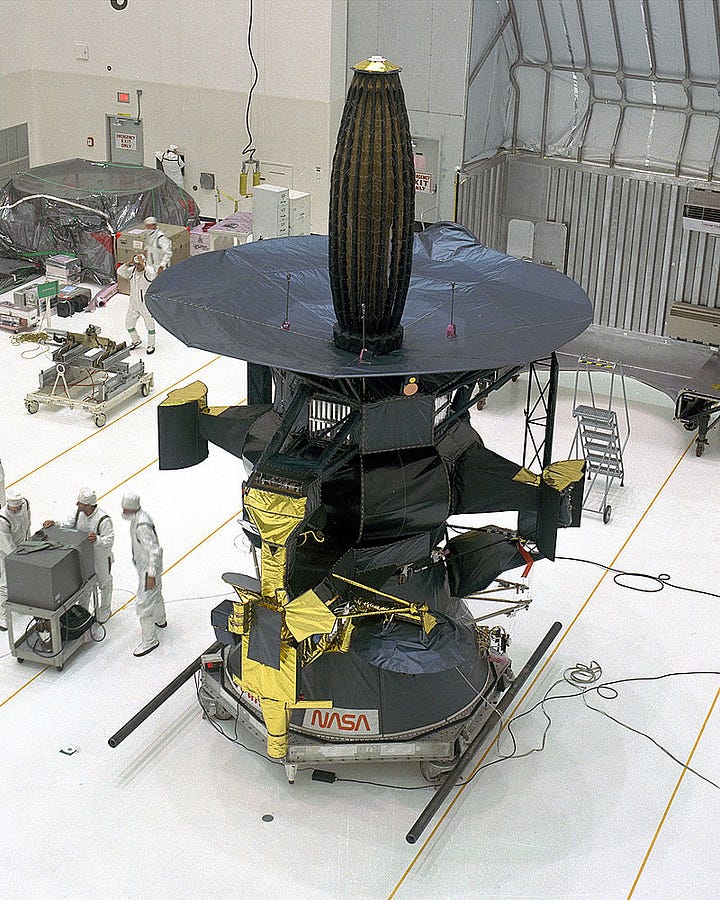
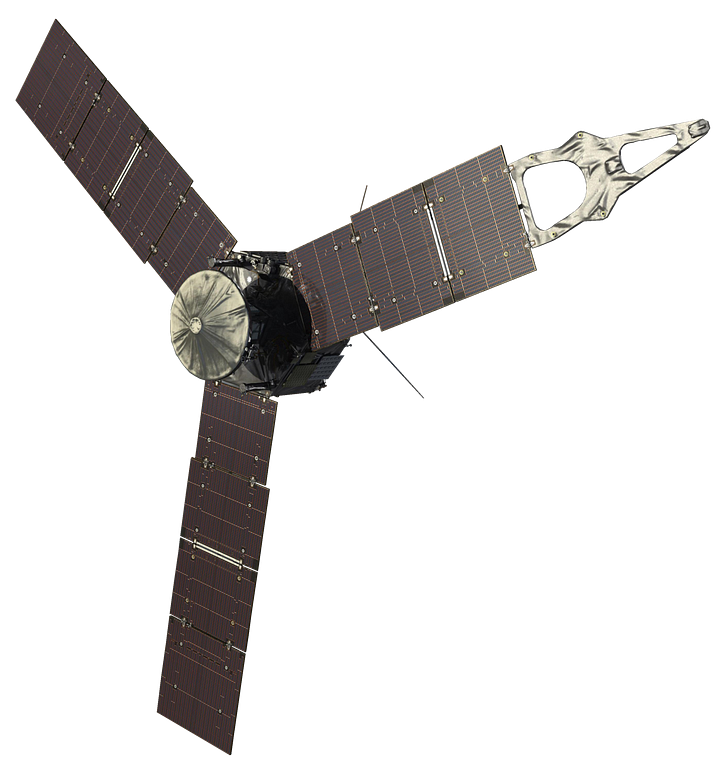
We hope you found this article informative. In next newsletter we will cover another interesting topic.



